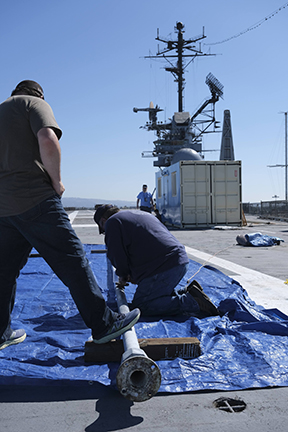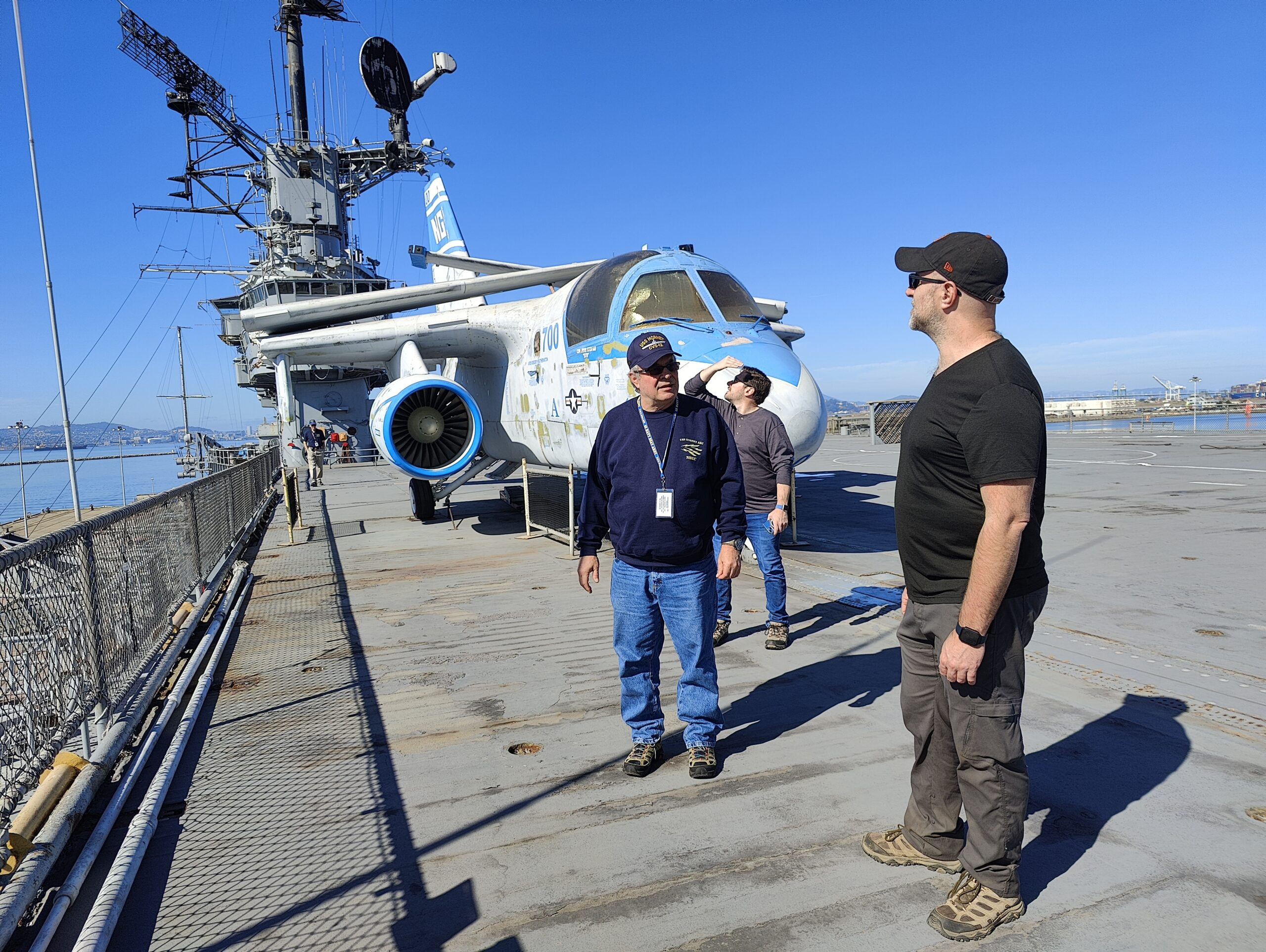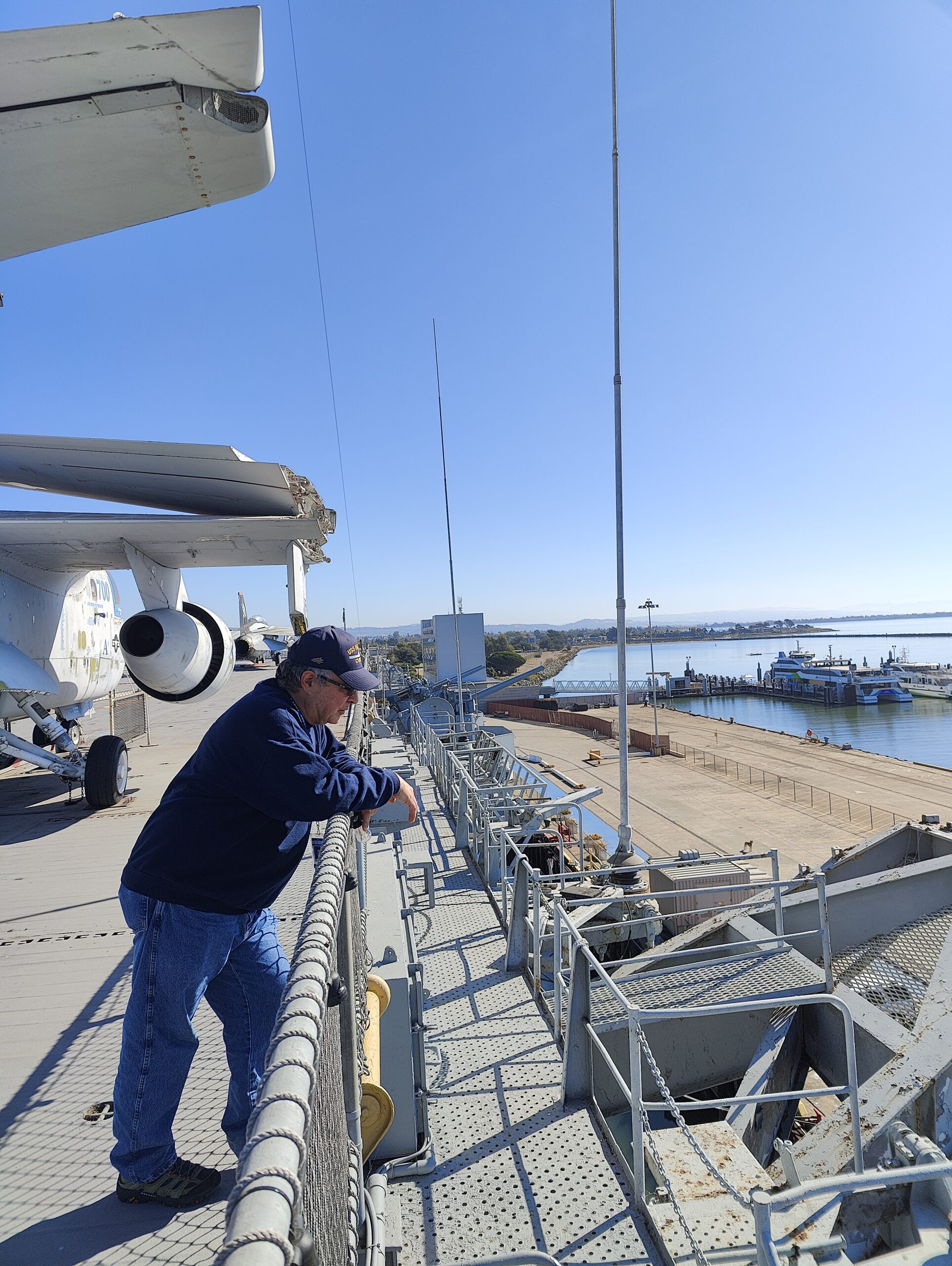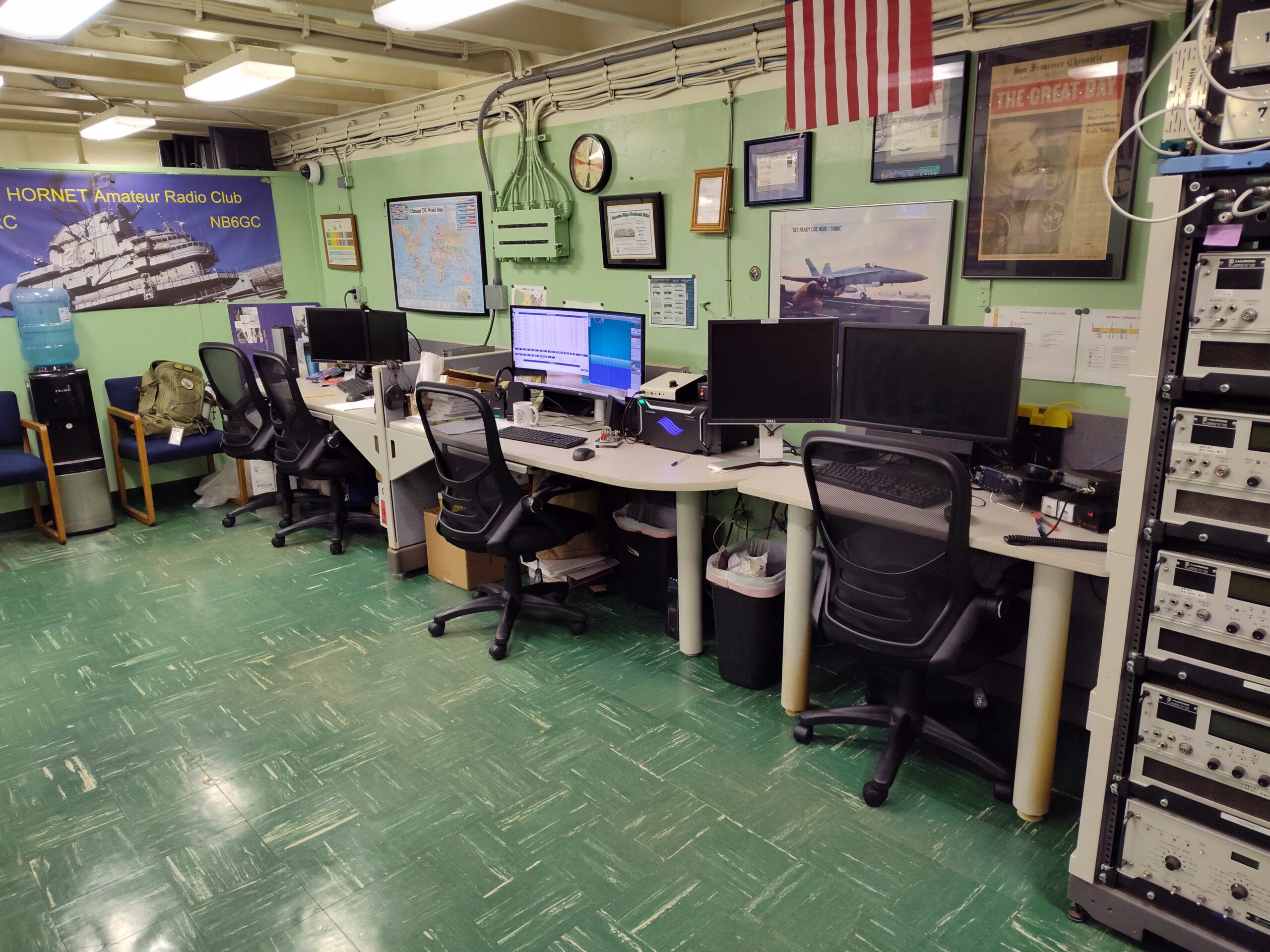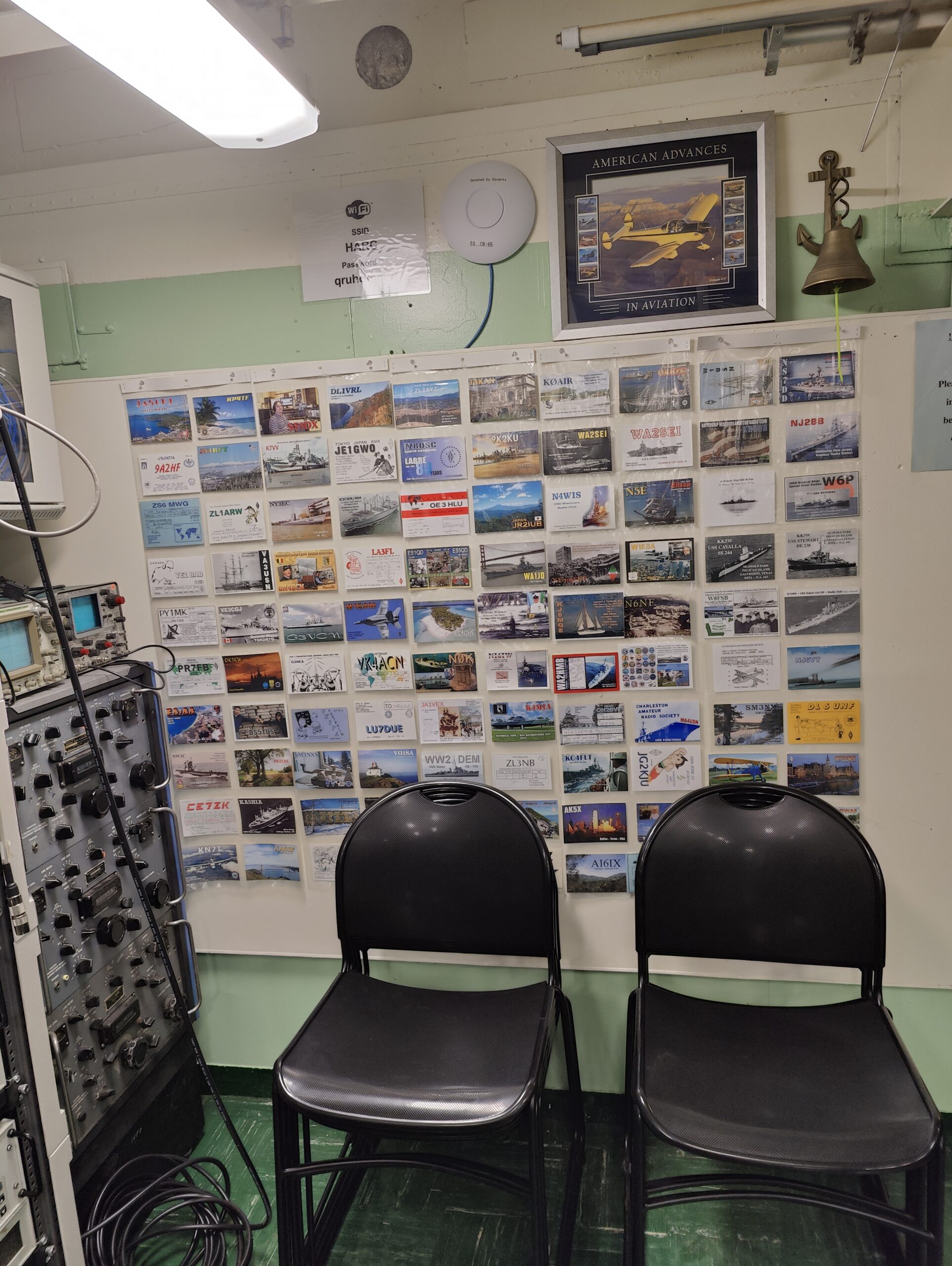The Hornet Amateur Radio Club’s (HARC’s) Upgrades to the USS Hornet

In January 2024, the USS Hornet Amateur Radio Club (HARC), was awarded $90,000 by ARDC. In addition to about $13,000 of additionally raised funds, the grant allowed them to restore and modernize both the radio equipment and facilities on the USS Hornet. The upgrades aim to further HARC’s work in amateur radio education, promotion, and historical preservation. This past October, some of ARDC’s staff had the opportunity to see the upgrades firsthand after attending Pacificon 2024. Check out some of the highlights of HARC’s incredible work below.
Restoring and Replacing Antennas
HARC is currently upgrading the station’s antennas throughout the ship, a process made challenging by its designation as a National Landmark (designated by the National Park Service). Preservation rules require HARC to use the old antennas, as no changes can be made to the ship’s structure since its decommissioning in 1970. Additionally, the deck of the Hornet cannot support heavy machinery, limiting the tools and equipment the team can use. Adding to the complexity, the Hornet operates as an active museum. As a result, the club schedules their work either during off-hours, or – if the museum is open – occupying minimal space on the flight deck.
Verticals on the Ship’s Edge
HARC is in the process of refurbishing their deck edge verticals, which range from 20 to 35 feet long. In order to do this, a club member has to get on the side of the ship in a safety harness to take them down and deliver them to the flight deck where they can be worked on. There are 15 of these verticals on the starboard side of the ship, and the group hopes to put two to three of them back on the air.
Antennas on the Mast
The antennas are mounted on the ship’s mast yardarm, approximately 195 feet above the waterline. Currently, three of these antennas are secured with rope, posing a risk to both guests and crew should the rope fail and fall on the flight deck. To address this, HARC aims to reposition and space these antennas on the yardarm, ensuring that they are both secure and functional.
Upgrades to the Onboard Radio Station NB6GC
HARC is also setting up their new operation station. The Harris radios that are currently in the station are nearly 50 years old. To keep these legacy systems operational, members of HARC must either make internal modifications to these radios or get parts from eBay (and hope the parts are in good condition). To circumvent this, they are upgrading their equipment with modern FlexRadios. At present, they have a FlexRadio set up and working in the shack, and all of the new seating is in place and ready to go. On November 16, HARC showcased their station and their latest upgrades at Techs on Decks, a celebration of air and space and sea innovation held on the 55th Anniversary of the Apollo 12 landing. Ultimately, they plan to retire the Harris radios by the end of the year.

Charlotte Dickert, Director of Institutional Advancement (left) and Geoff Abreu K6ERA, President of the Hornet Amateur Radio Club (HARC).
We look forward to seeing the finished upgrades and hearing about how the team worked within their constraints to make it happen. If you’re near Alameda or are attending Pacificon, we invite you to visit the Hornet. If you get the opportunity, make a QSO at NB6GC, as all operators receive a certification commemorating their contact. A huge shout out to HARC President Geoff Abreu K6ERA and Director of Institutional Advancement Charlotte Dickert for leading this project and preserving a piece of history!

